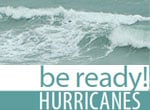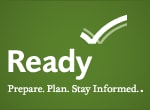Find information about cleaning and disinfecting at home to protect yourself during a coronavirus disease (COVID-19) outbreak.
Cleaning and Sanitizing with Bleach after an Emergency
Cleaning and sanitizing your household after an emergency is important to help prevent the spread of illness and disease.
Using Cleaning & Sanitizing Products
First, wash surfaces with soap and warm, clean water to remove dirt and debris. Next, sanitize surfaces with household bleach.
It is critical to read and follow the safety instructions on any product you use. Below are the most important safety guidelines when using sanitizing products:
- Never mix bleach with ammonia or any other cleaner.
- Wear rubber or other non-porous boots, gloves, and eye protection.
- Try not to breathe in product fumes. If using products indoors, open windows and doors to allow fresh air to enter.
Cleaning & Sanitizing with Bleach
Use regular, unscented household bleach with a sodium hypochlorite concentration between 5% and 9% (this is the most common concentration in the United States) and follow the instructions in the chart below.
Recommendations for Cleaning and Sanitizing Food Cans and Surfaces
| Area or Item to be Cleaned | Bleach Amount | Water Amount | Cleaning Steps |
|---|---|---|---|
| Food surfaces that may have touched flood water. Examples: Countertops, plates. Note: Throw away wooden cutting boards, baby bottle nipples, and pacifiers. |
1 tablespoon (0.5 ounces or ~15 mL) | 1 gallon (3.8 L) |
|
| Food cans that are not bulging, open, or damaged | 1 cup (8 ounces or 240 mL) |
5 gallons (18.9 L) |
|
Recommendations for Cleaning and Sanitizing Household Surfaces and Items
| Area or Item to be Cleaned | Bleach Amount | Water Amount | Cleaning Steps |
|---|---|---|---|
| Non-food contact surfaces that do not soak up water and that may have touched floodwater. Examples: Floors, sinks, certain toys, and tools. |
1 cup (8 ounces or 240 milliliters) | 5 gallons (18.9 L) |
|
Recommendations to Clean Mold Growth Off Hard Surfaces
| Area or Item to be Cleaned | Bleach Amount | Water Amount | Cleaning Steps |
|---|---|---|---|
| Mold growth on hard surfaces. Examples: Floors, stoves, sinks, certain toys, countertops, flatware, plates, and tools. |
1 cup (8 ounces or 240 milliliters) | 1 gallon (3.8 L) |
For more information see: Mold Clean-Up After Disasters: When to Use Bleach |
Be aware that flood water may be contaminated. For more information about how to protect yourself and your family, visit Cleanup of Flood Water.
For more information on cleaning and sanitizing with bleach and how to make water safe for drinking, see CDC’s pages on Household Cleaning and Sanitizing and Make Drinking Water Safe.


